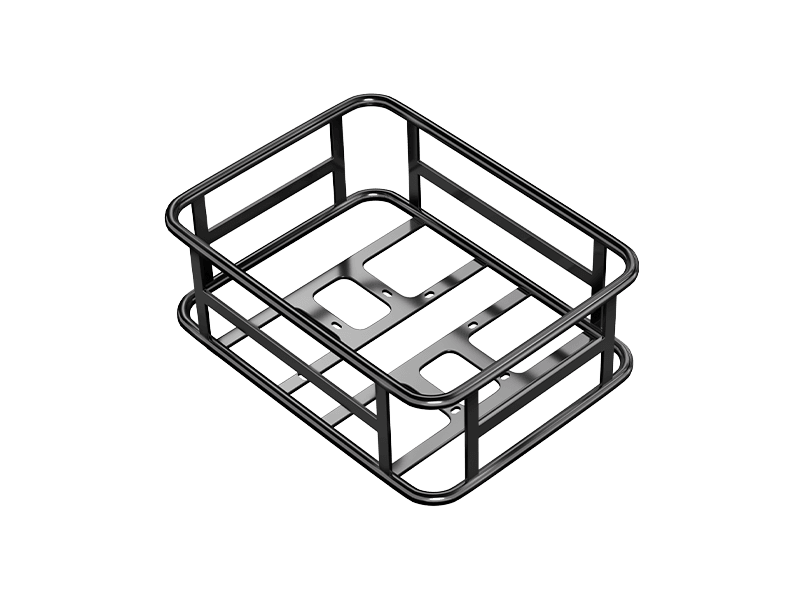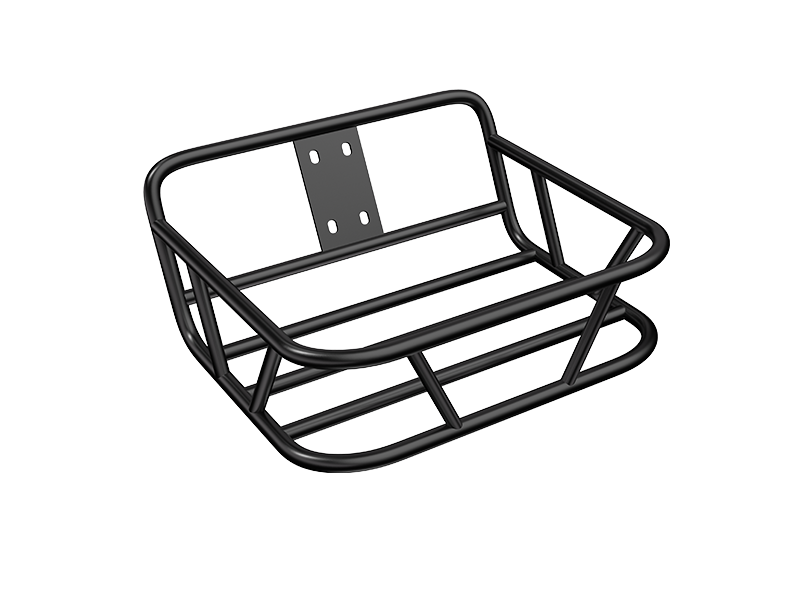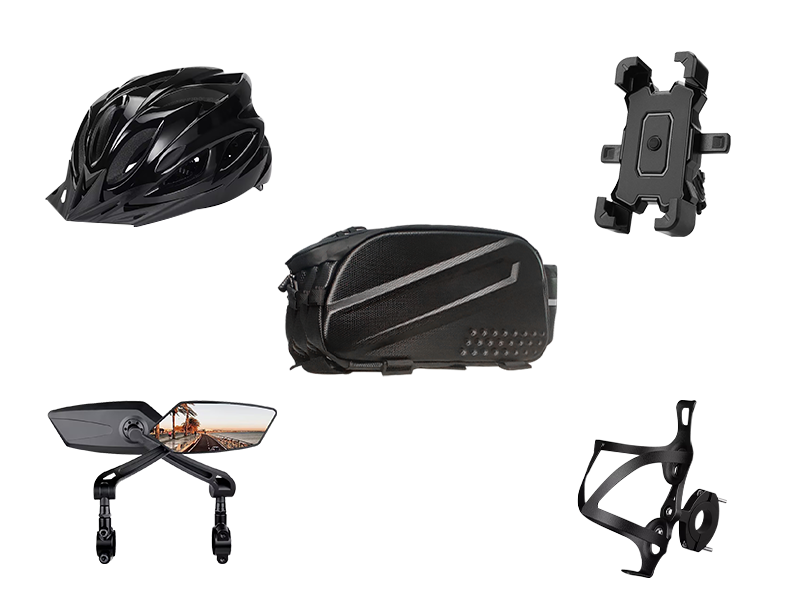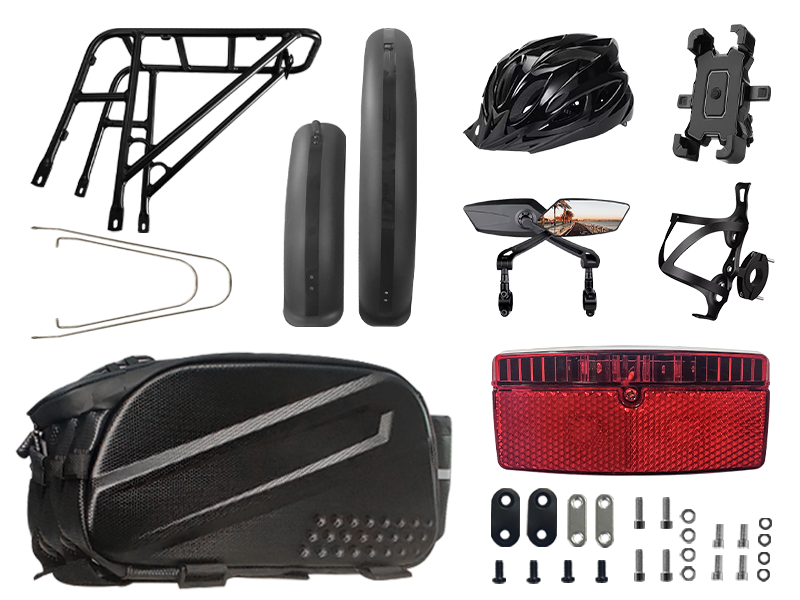The Wait is Over: Meet NOVA – Freesky’s Game-Changing Dual-Battery E-Bike
Jun 06, 2025
Hey Freesky Family & Future Riders!
We’ve been brewing something extraordinary behind the scenes, and today we’re thrilled to pull back the curtain. Get ready to redefine your ride – Freesky NOVA is coming to electrify your journey!
🔋 Double the Power, Double the Freedom
Say goodbye to range anxiety! NOVA shatters limits with its revolutionary Samsung Dual-Battery System (15Ah + 15Ah). Imagine cruising 75-120 miles on a single charge – commute all week, explore all weekend. This isn’t just an upgrade; it’s liberation.
⚡ Performance That Thrills
Powered by the legendary BAFANG 500W motor, NOVA delivers heart-pumping acceleration and a top speed of 28 MPH. Conquer urban slopes or country trails effortlessly, backed by torque-sensor technology that reads your every pedal stroke for buttery-smooth power.
🌟 Comfort Meets Intelligence
We believe joy lies in the journey:
Sink into serenity with our shock-absorbing wide saddle.
Customize your stance with the adjustable handlebar – ride tall, ride relaxed.
Glide over bumps on 27.5" x 2.25" puncture-resistant tires – your shield against city potholes and gravel backroads.
🌍 Designed For Every Rider, Every Mission
NOVA isn’t just built; it’s thoughtfully crafted:✨ Low-step frame: Gracefully mount and dismount – perfect for commuters in suits, skirts, or anyone seeking ease.✨ Inclusive by design: A gentle nod to riders who value accessibility without compromising style.✨ Cargo-ready freedom: Attach panniers, baskets, or child seats to the adjustable rear rack – transform NOVA into your grocery getter, adventure hauler, or school run superstar.
❤️ Why You’ll Fall in Love
“It’s the e-bike that adapts to you: long-range endurance for the explorer, agile power for the urban warrior, and comfort for the everyday hero.”
The Future is Charging…
NOVA isn’t just another e-bike. It’s your key to uncharted routes, unstoppable commutes, and unforgettable moments.
🔥 Stay Tuned – The Revolution Launches Soon!👉 Be the first to know:Subscribe to our newsletter for exclusive launch updates & early-bird offers.
Your journey to freedom starts with a single pedal stroke. Ready to ride beyond?
Read More
Powering Your Ride: The Crucial Link Between Your E-bike Battery and Riding Range
Jun 05, 2025
For anyone considering or already enjoying the freedom of electric biking, one question reigns supreme: "How far can I go on a single charge?" The answer lies at the heart of your e-bike – the battery. Understanding the intricate relationship between your battery and your potential riding range is key to unlocking confident, frustration-free adventures.
The Battery: Your E-bike's Fuel Tank (and Engine's Power Source)
Think of your e-bike battery as both the fuel tank and the power station. It stores electrical energy and delivers it to the motor, which provides the pedal-assist (or throttle power) that defines the e-bike experience. Naturally, the characteristics of this battery are the primary determinant of how far that energy can take you.
Key Battery Factors Dictating Range:
Capacity (Watt-hours - Wh): The Core Metric
What it is: This is the single most important number for estimating potential range. Watt-hours (Wh) represent the total energy stored in the battery. It's calculated by multiplying the battery's Voltage (V) by its Amp-hour rating (Ah): Wh = V x Ah.
Why it matters: A higher Wh rating means more energy on board. A 500Wh battery holds significantly more energy than a 300Wh battery, all else being equal, translating directly to a longer potential range. Comparing Wh ratings is the most direct way to compare battery capacity across different e-bikes.
Voltage (V) and Amp-hours (Ah): The Components of Wh
Voltage (V): Represents the electrical "pressure" of the system. Common e-bike batteries are 36V, 48V, or 52V. Higher voltage systems can often deliver power more efficiently, especially under heavy load (like climbing hills), which can indirectly contribute to better range utilization.
Amp-hours (Ah): Represents the battery's "current capacity" – how much current it can deliver over time. A higher Ah rating generally means longer runtime for a given voltage. However, always look at the combined Wh (V x Ah) for the true energy capacity picture. A 48V 10Ah battery (480Wh) holds more energy than a 36V 12Ah battery (432Wh).
Battery Health & Age: The Degradation Factor
Lithium-ion batteries (the standard for e-bikes) degrade over time and with use. Their ability to hold a full charge diminishes.
Impact on Range: A battery that's 2-3 years old or has undergone hundreds of charge cycles will likely only hold 80% (or less) of its original capacity. This directly reduces your achievable range. Proper charging habits (avoiding full discharges, not leaving at 100% charge for weeks) can help maximize lifespan.
Beyond the Battery: The Range Equation Has Variables
While the battery sets the potential energy limit, your actual range is significantly influenced by how you and your environment use that energy:
Rider Input & Assist Level:
Assist Level: This is HUGE. Using maximum power (Turbo or Sport mode) consumes energy dramatically faster than Eco or Low mode. Relying more on your own pedaling effort drastically extends range.
Pedal Power: The whole point of pedal-assist! The harder you pedal, the less work the motor has to do, conserving battery.
Terrain & Topography:
Hills: Climbing is energy-intensive. Frequent or steep hills will significantly reduce your range compared to flat terrain. Descents, however, can sometimes allow for regeneration (if equipped) or coasting without motor drain.
Rider & Cargo Weight:
Heavier loads (the rider plus any cargo or passengers) require more energy to accelerate and climb. Lighter loads generally mean longer range.
Tire Pressure & Rolling Resistance:
Under-inflated tires create more drag, forcing the motor to work harder. Keeping tires properly inflated is a simple way to maximize efficiency and range.
Wind Resistance:
Riding into a strong headwind significantly increases the effort required (both yours and the motor's), draining the battery faster. Tailwinds help!
Temperature:
Lithium batteries perform best in moderate temperatures (around 20°C / 68°F). Cold weather (below 10°C / 50°F) reduces battery efficiency and can temporarily decrease available capacity by 10-20% or more. Very hot weather can also stress the battery long-term.
Tire Type & Terrain Surface:
Knobby mountain bike tires on pavement create more rolling resistance than slick commuter tires. Riding on soft surfaces (sand, mud) also consumes more power.
Estimating Range: A Guessing Game (with Clues)
Manufacturers often provide range estimates (e.g., 50-120 km). This wide variation exists precisely because of all the variables listed above. The higher figure is usually achieved under near-perfect conditions (Eco mode, flat terrain, light rider, warm temps). The lower figure reflects more demanding use (higher assist, hills, cold).
Tools like Bosch's Range Calculator are excellent for illustrating how drastically factors like assist level and weight impact range from a given battery.
Maximizing Your Range: Practical Tips
Choose Wisely: When buying, consider your typical rides. If you have long commutes or hilly terrain, prioritize a higher Wh battery (e.g., 500Wh+).
Embrace Eco Mode: Use the lowest assist level that makes your ride enjoyable and efficient.
Pedal Power: Contribute meaningfully! Think of the motor as an amplifier of your effort.
Pump Up Tires: Check pressure regularly according to the tire sidewall.
Plan Routes: Minimize steep climbs if range is critical. Utilize bike paths away from stop-and-go traffic.
Dress Aerodynamically: Reduce wind resistance.
Manage Temperature: Store and charge your battery indoors in moderate temps. If riding in cold weather, keep the battery insulated (e.g., remove it and bring it inside until you start riding) and understand range will be reduced.
Maintain Battery Health: Follow manufacturer charging guidelines (avoid deep discharges, don't leave at 100% for long periods).
The Takeaway: Know Your Battery, Know Your Ride
Your e-bike battery's capacity (Wh) is the fundamental factor determining your potential range. However, your actual mileage is a dynamic result of how you interact with the bike and the environment. By understanding the relationship between the battery's specs and the factors that drain it, you can make informed choices when purchasing, plan your rides effectively, and adopt riding habits that stretch every electron as far as possible. This knowledge truly empowers you to explore further and enjoy the full potential of your electric freedom!
Read More
Fat Tire E-Bikes: Your Buyer's Guide to Choosing the Perfect Beast
May 29, 2025
Fat tire e-bikes aren't just a trend; they're a revolution in electric cycling, opening up terrains and experiences traditional bikes can't touch. With their oversized tires (typically 3.8" to 5" wide), electric assist, and rugged stance, they promise adventure, stability, and pure fun. But with so many options, choosing the right one can feel overwhelming. Fear not! This guide breaks down everything you need to know.
What Exactly is a Fat Tire E-Bike?
Imagine a mountain bike on steroids. Fat tire e-bikes combine:
Ultra-Wide Tires: Providing massive surface area for incredible traction, flotation over soft surfaces (sand, snow, mud), and a surprisingly smooth ride over bumps.
Electric Motor: Offering pedal assistance (pedelec) and often a throttle, making conquering hills, headwinds, and long distances effortless.
Robust Frame: Built to handle the stresses of wider tires and off-road adventures.
Why Choose a Fat Tire E-Bike? The Key Benefits
Conquer Any Terrain: Sand, snow, mud, gravel, rocky trails, grassy fields – fat tires excel where others sink or slip. They're the ultimate all-season, all-surface machines.
Superior Stability & Confidence: The wide footprint lowers your center of gravity and provides unmatched balance, especially at lower speeds or on unpredictable surfaces. Great for beginners or those with mobility concerns.
Plush, Comfortable Ride: The large volume tires act like natural suspension, absorbing bumps, potholes, and vibrations significantly better than standard tires. Your back and wrists will thank you.
Effortless Power: Tackle steep hills, headwinds, or long commutes without breaking a sweat. The motor makes challenging rides enjoyable and accessible.
Year-Round Adventure: Truly a four-season vehicle. Snow and beach rides become not just possible, but thrilling.
Pure Fun Factor: There's an undeniable "cool" factor and a unique, fun riding experience that puts a smile on your face.
Choosing Your Perfect Fat Tire E-Bike: Key Considerations
Primary Use (Your Mission):
Recreation & Beach Cruising: Prioritize comfort, a relaxed riding position (cruiser style), and maybe a throttle for pure fun. Mid-drive or hub motors both work.
Commuting: Look for practical features: fenders, racks, integrated lights, a comfortable saddle, and good range. Consider tire tread suitable for pavement/light gravel.
Trail Riding & Off-Road: Focus on suspension (front fork or full suspension), powerful motor (often mid-drive for better torque and handling), hydraulic disc brakes, aggressive tread, and a sturdy frame.
Snow & Sand: Ensure minimum 4.0" tires, deep aggressive tread, and sufficient motor torque/power. Hub motors can sometimes handle deep snow better than mid-drives (less susceptible to clogging).
Hunting/Cargo: Look for high payload capacity, very powerful motors (often 750W+), potential for cargo racks/trailers, and stealthy color options (for hunting).
Motor Type & Power:
Hub Motor (Rear or Front): Simpler, often more affordable. Provides direct power but can affect handling (especially front hub). Generally good for cruising, commuting, and moderate terrain. Power typically ranges from 500W to 1000W+.
Mid-Drive Motor: Mounted at the cranks/bottom bracket. Leverages the bike's gears, providing superior torque for climbing hills and technical terrain, more natural riding feel, and better overall weight distribution/balance. Preferred for serious off-road and mountain biking. Power ranges similar to hub motors.
Power (Watts): Higher wattage (e.g., 750W, 1000W) means more torque for hills, acceleration, and handling heavy loads/snow. Check local regulations as many regions limit motor power (e.g., 750W max in US Class 2/3, 250W in EU).
Battery (Range & Voltage):
Capacity (Ah & Wh): Watt-hours (Wh) = Voltage (V) x Amp-hours (Ah). Higher Wh = Longer Range. Don't just look at Ah; voltage matters! (e.g., 48V 15Ah = 720Wh; 52V 14Ah = 728Wh). Range estimates are highly variable (terrain, assist level, weight, wind); expect 20-60+ miles realistically.
Removable: Essential for easy charging, especially if storing the bike is awkward.
Location: Down tube is common and provides good weight distribution.
Tire Size & Tread:
Width: 4.0" is standard. 4.8" or 5" offers maximum flotation for deep sand/snow but adds weight and rolling resistance on pavement.
Tread: Aggressive, widely spaced knobs for loose terrain/snow. Smoother center tread with side knobs for mixed pavement/off-road. Consider studdable tires for icy conditions.
Brakes:
Hydraulic Disc Brakes: Highly Recommended. Essential for stopping power, especially given the bike's weight and potential for high speeds. Offer superior modulation and require less maintenance than mechanical discs. Don't compromise here.
Suspension:
Rigid: Simplest, lightest, cheapest. Relies entirely on tires for cushioning. Fine for smooth trails, pavement, and sand.
Front Suspension Fork: Crucial for handling rough trails, rocks, and roots at speed. Improves comfort and control significantly off-road.
Full Suspension: Offers maximum comfort and control on very rough terrain, but adds significant weight, cost, and complexity. Less common on fat e-bikes.
Frame Material:
Aluminum Alloy: Most common. Offers a good balance of strength, weight, and affordability.
Steel: Durable and absorbs vibration well, but heavier.
Carbon Fiber: Lightest and stiffest, but very expensive and less common on fat e-bikes.
Gearing:
Derailleur Gears: Offer a wide range, efficient. Require more maintenance, especially in muddy/wet conditions.
Internal Gear Hub (IGH): Enclosed gears are protected from elements, very low maintenance. Smoother shifting when stopped. Often fewer gears, slightly less efficient, heavier, and more expensive.
Weight & Payload Capacity:
Fat tire e-bikes are HEAVY (60-80+ lbs). Ensure you can lift/maneuver it if needed (stairs, car racks).
Check the manufacturer's payload capacity (rider + cargo). Many are rated for 300-350 lbs, but some heavy-duty models go higher.
Price:
Expect a significant investment. Quality fat tire e-bikes typically start around $1,500-$2,000 and can easily reach $4,000-$7,000+ for high-end models with premium components (mid-drive, large battery, suspension).
Popular Fat Tire E-Bike Types & Examples (Illustrative - Research Current Models!)
Affordable All-Rounder: Rad Power Bikes RadRover 6 Plus, Lectric XPedition
Premium Trail/Off-Road: Specialized Turbo Levo SL, Trek Rail, Riese & Müller Delite GT rohloff
Snow/Sand Specialist: QuietKat Ranger, Rambo Megatron
Comfort Cruiser: Electric Bike Company Model Y, Juiced RipCurrent S
Cargo/Hunting: Bakcou Mule, Biktrix Juggernaut Ultra FS
Final Tips Before You Buy:
Test Ride (If Possible): Nothing beats feeling the bike's weight, balance, and power firsthand.
Check Local Laws: Understand e-bike classifications (Class 1, 2, 3) and where they are allowed (trails, roads, paths).
Research Brands & Reviews: Look for established brands with good customer service and warranty support. Read independent reviews and owner forums.
Consider After-Sales Support: How easy is it to get parts or service locally?
Don't Forget Accessories: Budget for essentials like a helmet, lock, pump, and potentially fenders, racks, or lights if not included.
Conclusion:
A fat tire e-bike is your ticket to exploring beyond the pavement. By carefully considering how you'll use it and prioritizing the features that matter most (motor, battery, brakes, tires), you can find the perfect electric beast to match your adventurous spirit. Embrace the traction, soak up the comfort, and enjoy the ride – the world just got a whole lot more accessible!
Ready to unleash your off-road electric adventure? Happy riding!
Read More














